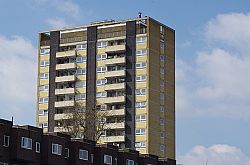

In an address to the House of Commons, Robert Jenrick, the Secretary of State for Housing, Communities and Local Government admitted that progress to make safe domestic high-rise buildings with unsafe flammable cladding had been 'unacceptably slow'.
Although bans on such cladding were introduced back in December 2018, work to make safe buildings where such cladding was present pose 'risk of a further loss of life'.
As part of new measures to be introduced by the Government to improve building safety, Jenrick announced that from February those responsible for buildings where works to fix tower blocks wrapped in Grenfell-style combustible cladding have not yet begun would be publicly named and shamed. Names would remain on the list until work began to remove the cladding.
315 high-rise blocks are still coated in the same style flammable cladding as Grenfell tower, 91 of these are owned by social tower block landlords and 143 privately-owned tower blocks.
Shadow housing secretary John Healey criticised the Government: “Why have 91 social tower block landlords still not replaced their ACM cladding when the secretary of state, this secretary of state, promised this would be done by last year?”
Leaseholders in the private sector have also faced problems over disputes as to who should pay for the removal of cladding, with some leaseholders quoted as much as £80,000 per household for the removal of cladding. Others are forced into high monthly payments for fire wardens for their buildings until the cladding is removed, leaving homeowners facing spiralling costs and unable to sell their homes.
The Government had set up a £200m private sector remediation fund to help leaseholders and Jenrick suggested that more financial support could be made available.
There were other developments in building safety announced by Jenrick in his address, including:
He also announced that Dame Judith Hackitt will lead the creation of a new national building safety regulator, that seeks to make building owners criminally liable for safety.
The Government have come out as being committed to fully adopting the recommendations made in the Grenfell Tower inquiry phase 1 report. Their response to the recommendations is due to be published soon and further debates on the matter are scheduled in the House of Commons.